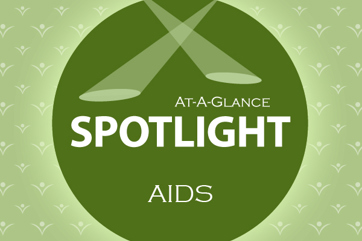At-A-Glance: December is AIDS Awareness Month
 Today marks the beginning of AIDS Awareness Month, a key opportunity to remind ourselves of the dangers posed by the disease, to celebrate victories in combating against the illness and to remember those that have suffered and continue to suffer from HIV and AIDS. Throughout December, organizations across the world will join together to educate, commemorate and work toward a cure.
Today marks the beginning of AIDS Awareness Month, a key opportunity to remind ourselves of the dangers posed by the disease, to celebrate victories in combating against the illness and to remember those that have suffered and continue to suffer from HIV and AIDS. Throughout December, organizations across the world will join together to educate, commemorate and work toward a cure.
HIV/AIDS Statistics in the United States
- One million people in the United States are living with HIV.
- One in five Americans living with HIV are unaware of their infection.
- A quarter of new HIV infections occur in young people, ages thirteen to twenty-four.
HIV/AIDS Treatment and Prevention
Advances in HIV/AIDS treatments have dramatically improved the lives of patients and their loved ones by helping patients live longer. As new treatments and medicines emerge, however, increased incidences of comorbid diseases have appeared such as kidney disease, cancers, and dementia. The leading treatment method for HIV/AIDS is a combination antiretroviral therapy, or ART. This consists of three or more drugs administered in a “cocktail” and has consistently improved the life expectancy of those with the disease. Survival estimates indicate that patients with access to current treatment regimens can survive for an additional 24 years compared to those that do not receive proper care. Treating expectant mothers with ART during pregnancy, delivery and while breastfeeding has reduced the risk of transmission of HIV to the child by 90% according to the Center for Disease Control and Prevention.
HIV is highly prevalent disease in low- and middle-income countries, yet the ART treatment is unavailable to 70-80 percent of patients for whom it might be beneficial, according to the University of California.
There is currently no vaccine to prevent HIV infection and no cure for AIDS, making prevention education crucial. To help prevent the spread of HIV, avoid any behavior that allows HIV-infected fluids into your body. Practicing safe sex, avoiding used needles and having open discussions about sexually transmitted diseases with your partner are important steps in protecting yourself from HIV. Above all, education is vital in overcoming this epidemic.
Hospice Care for HIV/AIDS Patients
Pain and symptom management is vital for individuals and their loved ones affected by HIV and AIDS. HIV, and its treatment, causes significant pain in patients. Some of the most prevalent symptoms include weight loss, fatigue, nausea, and depression. Addressing these symptoms improves quality of life, but patients often require constant medical care.
HIV-infected patients are generally younger than patients with other life-threatening diseases and often, they are members of minority groups that face social stigmas. Because of this, the emotional and spiritual component of their hospice care is paramount. Compared with patients who have cancer or heart disease, patients with HIV are more likely to have partners, caregivers or family members who also have the illness, or to have experienced the loss of multiple loved ones to the disease.
Where Can I Learn More About HIV/AIDS Issues?
- Aids.gov
- Center For Disease Control and Prevention
- Mayo Clinic



